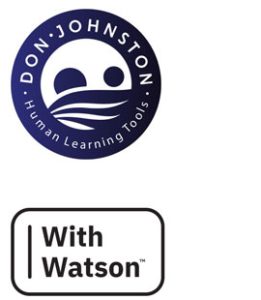Customer Highlights
Nexright > Customer Highlights
Driving Banking Innovation Leveraging Api Economy
Unkapt is an alternative lending, cross-border capital raising platform offering APAC small and lower middle market issuers (SMEs) the opportunity to use innovative financing to raise capital among a network of accredited investors.
Nexright have developed an API management solution for Banks that allows digital banking innovation running alongside the slow-speed, transaction-focused legacy systems.
Nexright helps a global customer in improving Sales visibility with CloudHub
Nexright has helped the customer in automating sales and order management processes by integrating SalesForce with NetSuite and ultimately improving the overall sales visibility with cloudhub, streamlining revenue operations, resulting in huge cost savings. Customer leveraged MuleSoft CloudHub platform to integrate SalesForce with NetSuite.
The Challenge
- Sales processes and tactics are often unique for each organisation. Customer leverages Salesforce and NetSuite SaaS platforms globally to embed their own sales methodology and back end processes to ensure efficient management of its customer relationship as well as sale of its products and professional services.
- This includes sales order automation and integration with NetSuite invoice management system. For example, when an opportunity is created in Salesforce, it leads to creation of customer, contract and sales order in NetSuite. Once the sales order is approved an invoice and contract is created.
- All these business functions provide value to Customer by enduring consistency and discipline in sales process and better overall visibility.
- Process automation and integration ensures efficient communication throughout the company and more importantly stops things falling through the cracks.
- To continue its impressive growth and support a global sales and professional service organization, Customer needed to automate some of these processes. Lack of automation resulted in substantial efforts spent in synchronizing the information between disparate systems, duplicate information and ultimately lack of visibility.
The Solution
- Nexright assisted in automating many of the sales and order management business processes by partnering with Nexright and selecting MuleSoft CloudHub platform.
- Customer integrated Salesforce and NetSuite to quickly automate existing business processes and automate opportunity, customer, sales order, invoice and quote to name a few.
- An example where CloudHubs flexibility shines is, once an opportunity is created in Salesforce, it leads to the creation of a necessary order in NetSuite. Simultaneously, it also creates a renewal quote for that contract. This renewal quote will be considered as an opportunity for Customer at the end of the contract tenure. With CloudHub integration, Customer automated many of its processes including complex business logic.
- MuleSoft CloudHub was the solution of choice because of the out of the box connectors for Salesforce and NetSuite and the integration as a service platform which is the fastest way to integrate SaaS applications reliably and securely.
- With no hardware to maintain or software to upgrade, CloudHubs secure multi-tenant platform delivers the freedom of the cloud with the flexibility of deploying Customers integration.
- Nexright leveraged its NZ Government approved Cloud Service Brokerage, pre-built integration patterns, MuleSoft technology accelerators combined with its unique delivery approach to roll out the complete solution. Agile methodology combined with Salesforce and MuleSoft certified consultants were also some of the key drivers for a successful outcome.
The Results
- Instant quote to cash process with real-time event-driven integration, saves many hours of manual efforts in synchronization.
- Achieved single view of customer to support.
- With CloudHub software as a service platform, significant reduction in maintenance and operation cost.
Generative AI generated 60% of Ansible Playbook Content in IBM CIO Organization Pilot
IBM watsonx Code Assistant for Red Hat Ansible Lightspeed technical preview generated over half of Playbook content
-
Business-critical apps
-
Adopting automation, exploring AI
-
Driving modernization
-
About IBM CIO Organization
Business-critical apps
The Hybrid Cloud Platforms team within the IBM Chief Information Officer (CIO) Organization is responsible for delivering, securing and modernizing an immense, diverse IT environment that powers applications used by hundreds of thousands of IBMers every day. “We have a broad scope of responsibility for business-critical application infrastructure. Take, for example, our manufacturing or sales applications. If those go down, IBM business comes to a halt. It’s those types of applications that our team supports,” explains Bob Epstein, Leader, IBM CIO Hybrid Cloud Platforms.
The team’s mission is not just to keep the lights on. Their mission is to accelerate business transformation across IBM. “Our work to optimize IBM’s infrastructure is essentially the cornerstone that enables everyone else to run fast and innovate in their role,” adds Melissa Santisteban, CIO Strategy Lead at IBM. The team is always looking for new ways to streamline and automate tedious, repetitive IT maintenance tasks that are required across the entire IT estate. They seek to eliminate drudgery and instead give their developers the time they need to contribute to transformational initiatives.
This is why the team relies on industry-leading technologies such as Red Hat Ansible Automation and why, when the Technical Preview of IBM watsonx™ Code Assistant for Red Hat Ansible Lightspeed began, they volunteered to test out the solution.
Adopting automation, exploring AI
Before the technical preview program began, Epstein’s team was already relying on Red Hat Ansible Automation to support a wide range of tasks within their IT environment. “We use Ansible automations every single day, whether it’s through patching, resolving vulnerabilities or running regular health checks of our systems,” explains Epstein. When they began testing watsonx Code Assistant for Red Hat Ansible Lightspeed, Epstein’s team started by focusing on their existing use cases.
With watsonx Code Assistant for Red Hat Ansible Lightspeed, developers can build a task for an Ansible Playbook using natural language inputs. Once the input is submitted, the solution then offers suggestions on how to build that task.
“Our team of people who could produce Ansible Playbooks before the technical preview program began was around 10. Once the Enterprise Version of watsonx Code Assistant for Red Hat Ansible Lightspeed becomes Generally Available, we expect we would be able to ask our extended team to produce Ansible content because it will generate content recommendations based on natural language inputs. In that sense, we expect our pool of individuals who can produce this content to grow by about a factor of 10,” says Epstein.
60%
Of IBM’s Ansible Playbook content was automatically generated by watsonx Code Assistant for Red Hat Ansible Lightspeed in tech preview
Our team of people who could produce Ansible Playbooks before the technical preview program began was around 10. Once the Enterprise Version of watsonx Code Assistant for Red Hat Ansible Lightspeed becomes Generally Available, we expect we would be able to ask our extended team to produce Ansible content.
Bob Epstein
Leader
IBM CIO Hybrid Cloud Platforms
Driving modernization
During the technical preview of watsonx Code Assistant for Red Hat Ansible Lightspeed, the team was able to achieve 60% initial build of an Ansible Playbook using recommendations provided by watsonx.
“I like to look at our modernization journey in these stages: crawl, walk, run, fly. In the past, we were crawling, doing a lot of things manually. Then, when we started automating, we were walking. Once we implemented Red Hat Ansible, we were running. And as we look ahead, with watsonx Code Assistant for Red Hat Ansible Lightspeed, I think we will be able to fly,” adds Robert Barron, Architect, Hybrid Cloud Platforms, IBM CIO Organization. See how watsonx Code Assistant for Red Hat Ansible Lightspeed can help you fly.
Every company will have different use cases and will, therefore, experience different results. Client examples, like IBM’s, are illustrative, but actual results will vary based on client configurations and conditions. Generally expected results cannot be provided as client results will depend on the data, systems and services used.
![]()
About IBM CIO Organization
The Chief Information Officer (CIO) Organization leads IBM’s internal IT strategy and is responsible for delivering, securing, modernizing and supporting the IT solutions that IBMers, clients and partners use to do their jobs every day. The CIO strategy encompasses creating an adaptive IT platform that makes IT easier to access across the enterprise, accelerates problem-solving and serves as an innovation engine for IBM, catalyzing business growth.
Transforming the way developers learn and work
How IBM Consulting achieved a 30% reduction in Ansible Playbook development effort while maintaining quality, compliance and resiliencyÂ
-
Overview
-
Transforming Ansible Playbook development
-
Increasing productivity with generative AI
-
About IBM Consulting
Is it time to rewrite the model for software development?
All over the world, demand for software developers is growing. In fact, the US Labor Department (link resides outside IBM.com) expects job opportunities for software developers will grow by 25% by 2031. At the same time, it estimates that the global shortage of software engineers (link resides outside IBM.com) may reach 85.2 million by 2030. This imbalance between the supply and demand of software developers will continue to deepen over time if it remains unaddressed.
œTo be proactive in helping our clients address this trend, we have begun exploring generative AI-enabled pair programming, explains Gerry Leitão, Partner and Global Hybrid Cloud Automation Leader for IBM ConsultingÂ. œIn our early testing, we have seen firsthand that generative AI can act as a force multiplier for developers. There™s so much legacy code that needs to be refactored and modernized, not to mention net new code being developed. Generative AI has an important role to play in balancing those priorities, says Leitão. In fact, Gartner estimates (link resides outside IBM.com) that œby 2025, 80% of the product development life cycle will make use of generative AI code generation, with developers acting as validators and orchestrators of back-end and front-end components and integrations.*
œWe began our mission to help clients increase developer productivity using generative AI by bringing together IBM Research, IBM Technology and Red Hat. There are so many possible use cases to explore. We chose to start with Ansible, notes Leitão. Ansible Automation Platform (link resides outside of ibm.com) is the leading IT automation platform that helps thousands of companies across the globe drive complexity out of their IT environments and automate their IT Operations.
œWe asked, ˜How can we help shorten the Ansible learning curve and amplify the impact of each individual who develops Ansible automation?™ says Leitão. This led to the technical preview of IBM watsonx™ Code Assistant for Red Hat Ansible Lightspeed (link resides outside IBM.com).
* Gartner, Emerging Tech: Generative AI Code Assistants Are Becoming Essential to Developer Experience, May 11, 2023. GARTNER is a registered trademark and service mark of Gartner, Inc. and/or its affiliates in the U.S. and internationally and is used herein with permission. All rights reserved.
Up to 45%
improvement in initial build productivity for Ansible Playbooks
Decrease
in time it takes a new user to get up to speed and be productive in Ansible
We™re not looking to replace developers. Generative AI is not going to build every piece of code out there. It™s going to be a force multiplier when it™s paired with a human.
Gerry Leitão
Partner and Global HCS Automation Offerings Leader
IBM Consulting
Transforming Ansible Playbook development
Through AI-generated recommendations that are based on natural language inputs, developers can use watsonx Code Assistant for Red Hat Ansible Lightspeed to modernize and build Ansible Playbook content faster: content that is of high quality and resiliency, as it is deployed into production.
During the technical preview for watsonx Code Assistant for Red Hat Ansible Lightspeed, Leitão™s team tested the solution and built Ansible Playbooks that were intended to support a range of use cases, including: automating the installation of SAP databases and applications in Amazon Web Services (AWS); and, in a single click, providing end-to-end installation of SQL database and server components along with Primary Application Server (PAS) installation of SAP of JAVA/ABAP systems. The team also used it to test refactoring and modernization of legacy playbooks supporting use cases such as user access management, security policy enforcement, and system (IBM WebSphereÂ/MQ/DB2Â) setup, monitoring and upgrades.
œThe tool is designed to increase the velocity and volume of Ansible content that we can build and/or modernize for our clients. I believe the quality of those Ansible Playbooks should be higher because watsonx Code Assistant will find and recommend the best components that the developer can use to build each playbook, explains Leitão. In the case of watsonx Code Assistant for Red Hat Ansible Lightspeed, it will allow more developers, with a broader range of backgrounds, to build and refactor Ansible automations. œWe™re not looking to replace developers. Generative AI is not going to build every piece of code out there. It™s intended to be a force multiplier when it™s paired with a human, adds Leitão.
The Granite foundation model underlying watsonx Code Assistant for Red Hat Ansible Lightspeed was trained and tested by experts across IBM and Red Hat. œWe helped tune the model using best practices we gained from years of development work with clients, says Leitão. When offering recommendations, watsonx Code Assistant shares the most-likely training matches for maximum trust and transparency. Each suggestion will include the three closest matched sources of content, their author and license.
The tool is designed to increase velocity and volume of Ansible content that we can build and/or modernize for our clients. I believe the quality of those Ansible Playbooks should be higher because watsonx Code Assistant will find and recommend the best components that the developer can use to build each playbook.
Gerry Leitão
Partner and Global HCS Automation Offerings Leader
IBM Consulting
Increasing productivity with generative AI
œDuring the technical preview for watsonx Code Assistant for Red Hat Ansible Lightspeed, we observed initial build productivity improvements in the range of 20%“45%. As we move to GA, even more gains in productivity are expected. We also believe there™s additional downstream productivity that has not been fully quantified yet, explains Leitão. œNot only are we aiming to accelerate the development phase for Ansible automations and shorten time-to-value for our clients after GA, but we intend for the quality of the content to be higher.
Since watsonx Code Assistant for Red Hat Ansible Lightspeed empowers developers to create Ansible tasks using natural language inputs, developers are positioned to quickly expand their skill set and increase their impact on their organizations. œWatsonx Code Assistant is expected to both expand the number of people who can develop Ansible automations and reduce their time-to-proficiency because they have generative AI assisting them, notes Leitão.
As they work with watsonx Code Assistant for Red Hat Ansible Lightspeed, teams will be able to uncover different ways to create value with Ansible. œWe believe watsonx Code Assistant for Red Hat Ansible Lightspeed will broaden the aperture of what can be built on Ansible. A developer might be biased toward building content using one approach, or they may be entirely new to Ansible, argues Leitão. œWatsonx Code Assistant for Red Hat Ansible Lightspeed is designed to empower people to explore more, so they™ll discover more of what can be built. What is possible on the platform should increase, as developers work more with generative AI.
Â
![]()
About IBM Consulting
IBM Consulting accelerates business transformation for our clients through hybrid cloud and AI technologies, leveraging our open ecosystem of partners. With deep industry and business expertise spanning strategy, experience design, technology and operations, we have become the trusted partner to the world™s most innovative and valuable companies, helping modernize and secure their most complex systems. Our 160,000 consultants embrace an open way of working and apply our proven co-creation method, IBM Garageâ„¢, to scale ideas into outcomes.
CodeObjects
Creating a frictionless experience for insurance customers, even during disasters
-
Business Challenge
-
Transformation
-
Results
-
Business challenge story
-
Transformation story
-
Results story
-
CodeObjects
In the insurance industry, some of the most important calls come under some of the most stressful circumstances. That’s why CodeObjects is using IBM Watson technology to develop InsurBot.ai, an AI assistant that eliminates call center holds, reduces costs and helps put anxious customers on the road to recovery quickly.
Business Challenge
Insurance calls surge after natural disasters, creating backlogs and long waits for policyholders. CodeObjects wanted to use AI technology to help insurance companies respond to calls more quickly.
Transformation
InsurBot.ai helps insurance companies improve responsiveness by automatically responding to policyholders’ questions and requests, and automating business transactions.
Results
Completely eliminates call wait times
for policyholders, even during major disasters
Saves approximately USD 1 per minute
resulting in hundreds of thousands of dollars in total savings
>75% reduction in average call time
thanks to AI technology that efficiently assesses policyholder needs
Business challenge story
Record losses
The years 2016 and 2017 saw record numbers of natural disasters in the US and beyond. For property and casualty (P&C) insurers, this meant record numbers of catastrophic loss claims from hurricanes, floods, fires and more. As the number of claims grew, so did the need among P&C insurers to provide impeccable customer service. This was a call to action for CodeObjects, which develops core insurance systems for insurance companies throughout the US.
“If someone suffers a loss from a hurricane that damaged their house, they don’t want to spend an hour filing a claim with their insurance company,” explains Arun Bala, Vice President of Product Management for CodeObjects. “The only interaction many policyholders have with their insurance company is when they need to file a claim, so it’s in the insurer’s best interest to make the customer experience as positive as possible.”
However, many insurance companies outsource this vital touchpoint to third-party call centers, which can create complications. Outsourced call centers typically use their own systems because they don’t want to train their staff on several different applications. This can impact an insurance company’s ability to obtain accurate information about the nature of the loss, which in turn creates inefficiencies in the entire claim handling process.
“And it’s not just calls related to catastrophic events,” says Bala. “People call to find out what sort of coverage they have, or to ask questions about their bills. Every single touchpoint they have with customer service reps can be fraught with inefficiency, not to mention the high cost. These are significant pain points, and many insurance carriers are trying to mitigate them using automation.”
“In response,” says Bala, “we are augmenting our core system offerings with chatbot capabilities that will allow our existing and prospective customers to provide a superior customer experience.”
“We believe chatbots make a compelling case. Once you train the model well enough, it provides predictable and repeatable outcomes. Once you train the chatbot to converse like your five-star CSR [customer service representative], every single conversation has the potential of being a five-star conversation,” says Bala.
Every single touchpoint they have with customer service reps can be fraught with inefficiency, not to mention the high cost. These are significant pain points, and many insurance carriers are trying to mitigate them using automation.
Arun Bala
Vice President of Product Management
CodeObjects
![]()
Transformation story
A dramatic rollout
After exploring a number of options for AI, CodeObjects selected the IBM Watson platform to support its chatbot product, which the company calls InsurBot.ai. The solution features IBM watsonx Assistant, IBM Watson Discovery, IBM Watson Speech to Text, IBM Watson Text to Speech and IBM Voice Agent with Watson services.
Anthony Peccerillo, Vice President of Product Marketing for CodeObjects, picks up the story: “Our plan for phase one of the product was to target the customer service area and automate repeatable tasks that people are doing on a daily basis.”
Critical first-phase tasks included filing a first notice of loss (FNOL), checking payment or claims status, getting a quote and making a payment. The solution responds to policyholders’ voices, following a predetermined script that was developed after using Watson technology to analyze approximately 50,000 calls received after Hurricane Irma in 2017.
Although the intention was to make the experience as easy and seamless as possible for policyholders, InsurBot.ai was also careful to give callers a sense of control. Bala explains: “In the dialog flow we wrote using IBM watsonx Assistant, there are various nodes where the call could be branched off to a live agent, either because of user request or because of some other internal condition.”
Just as CodeObjects was finishing up the scripts for the first phase of the InsurBot.ai initiative, Hurricane Michael made its first appearance on radar screens. The hurricane was headed for the Florida Panhandle, where many of CodeObjects’ customers had operations. If the models were correct, it would be one of the largest storms to hit the area since 1992. Catastrophic losses were virtually inevitable.
Anticipating a huge influx of P&C claims after the hurricane hit, Security First Insurance, one of CodeObjects’ existing customers, decided to roll out the new AI assistant in advance of the storm. With less than a week’s notice, the InsurBot.ai and Security First Insurance teams got to work on moving from pilot to production. “We went into deployment mode,” says Bala. “It was all hands on deck. We tested it, stabilized it and migrated the production environment from standard to premium Watson plan. It was a short window for a lot of activity, but we met the challenge head on and had a successful outcome.”
Werner Kruck, Chief Operating Officer at Security First Insurance, agrees: “Not only are we able to improve customer satisfaction, the team at InsurBot.ai enabled us to create a technology strategy to further differentiate the experience we offer and lower costs in the long term.”
Results story
Promising results
Among the policyholders who chose to use InsurBot.ai after Hurricane Michael, 75 percent were able to complete their business without being diverted to a live agent. In total, InsurBot.ai handled 30 percent of all of the calls Security First Insurance received after Hurricane Michael’s devastating landfall. This resulted in savings of approximately USD 1 per minute during the post-storm spike.
Furthermore, in keeping with CodeObjects’ tenet of helping its customers create frictionless customer experiences, callers who chose to use InsurBot.ai experienced zero wait times. During a hurricane the previous year, the average wait time was approximately eight minutes, and some calls took as long as 30 minutes. Clearly, this was a huge improvement for the insurer—and for its policyholders.
The success of InsurBot.ai during Hurricane Michael confirmed for CodeObjects that its solution will help address customer service concerns throughout the P&C industry. Ultimately, InsurBot.ai will support multiple languages and multiple channels, plus it will integrate with many existing insurance systems.
CodeObjects plans to use analytics to round out the solution further. Peccerillo explains: “For example, we could overlay data that’s projecting the path of a storm with the client list and proactively send risk mitigations, documentation or videos so people who are in the track of the storm can prepare.”
Analytics could also benefit the insurance companies themselves. Says Bala: “We want to provide our customers with tools that tell them what’s going on. What’s working well with the bot, what’s not working well, and where the hotspots are so that they can quickly address them.”
With these additional capabilities, CodeObjects believes that InsurBot.ai will be able to handle nearly all calls seamlessly, even during catastrophic events. “It’s designed to handle the highest volume you could possibly throw at it. Whether you’re the first person or the 100th person, your call will be answered immediately. That’s our goal,” Bala concludes.

CodeObjects
Founded in 2006, CodeObjects develops core systems for insurance companies across the US. In 2018, CodeObjects introduced its flagship product, InsurBot.ai, an AI-powered customer assistance service that is changing the way insurance companies communicate with their customers.
Don Johnston Inc.
Don Johnston is making reading and writing more accessible to students
The thing that you are doing right now”reading”is potentially one of the most essential life skills that you can develop. It can convey critically important knowledge quickly and easily. It can reveal wondrous beauty and create transcendent moments of the spirit. It can unlock the imagination to create a better today and tomorrow.
But for millions of people across the planet, either due to physical or learning disabilities, the act of reading can be rather challenging, if not impossible. In many cases though, with the right techniques and tools these challenges can be overcome. And learning technology company Don Johnston Inc. is an established leader in democratizing the written word for everyone.
œMy father grew up with dyslexia back in the 50s, and at that time there wasn™t a lot of awareness or support for students with learning disabilities, recounts Ben Johnston, Director of Marketing with Don Johnston. œSo when he started the business in 1980, that was our focus, making reading and writing more accessible.
An early project for the company was the development of word prediction. Ideally, with these tools, people with physical limitations that affected their ability to type could reduce the number of keystrokes required to complete a sentence, converting an effort that required minutes into seconds.
As the years passed, these word prediction tools evolved into one of the company™s flagship offerings, Co:Writer. Educators started seeing tools like Co:Writer working not just for people with physical disabilities, they were also helping students with dysgraphia and learning disabilities like dyslexia. And text-to-speech capabilities proved a core accessibility piece of this solution.

Student performance
For students reading below their grade level, when they are read to ~55%Â comprehend at or above their grade
Extensive reach
Don Johnston has its learning tools present in >32,000Â schools in the US
For many students, it means that they don™t feel stupid anymore. They feel that all they need to do is read in a different way, and they can totally participate at grade level as opposed to reading text that™s been modified down ¦
Ben Johnston
Director of Marketing
Don Johnston Inc.
œA lot of the work that we do today focuses on dyslexia, clarifies Johnston. œAnd being able to hear the text spoken aloud often improves comprehension for people that struggle to read visually. A lot of people with dyslexia can understand spoken text at a much higher grade level than they can read it. For accessibility we wanted to make everything read aloud, which would also be helpful for people with visual impairments or other disabilities.
Of course, not just any text-to-speech platform would do. Johnston explains: œOne of the biggest factors was that it needed to be simple and consistent, working on a number of different devices”but particularly on Chromebooks. About 70% of schools use Chromebooks, so we needed something that would be able to get high quality voices out of relatively simple equipment.

A solution that speaks to you
After evaluating various options, Don Johnston decided to incorporate IBM Watson Text to Speech technology into its technology platform. œThe accessibility was critical, explains Johnston. œOne of the things our tools”and school districts”require is synchronized word-by-word highlighting as words are read. But not all speech engines provide the accessible information that we need to give that visual support and guidance. IBM did.
As a first step, Don Johnston integrated the IBM technology with its Co:Writer and Snap&Read tools. Co:Writer helps users to articulate their thoughts into written text, using word prediction, translation support and speech recognition.
œNow, when users type with Co:Writer, they can listen to the text as it™s read back to them, adds Johnston. œIt lets them confirm”does this make sense? Does this actually mean what I™m intending to say? That kind of reinforcement can really help student self-assess their writing and produce legible, understandable sentences.
Snap&Read uses IBM Watson technology to offer a host of capabilities that make reading more accessible such as PDF annotation and Dynamic Text Leveling”where more complex words and phrases are replaced with simpler, easier to read terms. The toolkit also features optical character recognition (OCR) capabilities that when combined with IBM Watson Text to Speech enable Snap&Read to read aloud content that might be embedded in an image, such as a chart or infographic.
œSnap&Read makes the text more readable, notes Johnston. œAnd now, as the student reads, they can use the text to speech to help even further comprehend the content at a higher rate than before. We also include support for English language learners, so a student can translate text, and have that portion read in a more familiar language. The IBM solution offers different voices for the more than 100 languages that we translate into.
And to help schools identify which students might benefit from using these tools, Don Johnston created its uPAR evaluation platform, which is now also supplemented by IBM Watson Text to Speech.
œWe have students go through a process that gives educators data to show if read aloud accommodations will work for a particular student, and if so, how much they™ll benefit, notes Johnston. œWe™re kind of triangulating their understanding and finding out which students would benefit from this type of support. And what we™ve found is approximately 55% of students reading below grade level can comprehend at or above grade level when listening to text read aloud.

For many students, it means that they don™t feel stupid anymore. They feel that all they need to do is read in a different way, and they can totally participate at grade level as opposed to reading text that™s been modified down ¦
Ben Johnston
Director of Marketing
Don Johnston Inc.
Smarter tools. Savvy students.
With the augmented text-to-speech capabilities delivered by working with IBM, Don Johnston is well prepared to continue supporting students as they improve their reading comprehension.
œSo for a student with dyslexia or other challenges, if we can help them comprehend text at their ability level, it changes everything, clarifies Johnston. œFor many students, it means that they don™t feel stupid anymore. They feel that all they need to do is read in a different way, and they can totally participate at grade level as opposed to reading text that™s been modified down and isn™t what the other students are reading.
And in particular, the business is pleased with its choice to become an IBM Business Partner and to use IBM technology. œWatson was definitely useful because it brought a really high-quality voice engine that™s incredibly reliable, adds Johnston. œWe™ve actually never had to call up support. We™ve never had a problem with it. The tool has been just super steady.
In 2020, that stability proved particularly useful as remote learning became much more prominent due to the COVID-19 pandemic. The switch to eLearning gave many districts a new perspective about how many students struggled to read and write, and they needed to quickly find ways to support them.
œWe saw our use of text to speech increase exponentially, recalls Johnston. œThere were literally over a billion requests to that system by millions of students. And as learning transitioned back to in-person, our customers continue to expand to support even more students because they see accessibility working. They see it as a core component of the education architecture of the future.
Johnston concludes, adding: œIn education, there™s been a movement towards more equity, towards giving people the tools that create opportunity. And I think that this move to accessibility is really resonating, and we™ve created an opportunity here to expand beyond just schools and into everyday life. There™s this wave of interest in helping people accomplish more, and we™re excited to be pushing that forward with IBM.

About Don Johnston Inc.
Founded in 1980, IBM Business Partner Don Johnston (link resides outside of ibm.com) is a developer of human learning solutions, particularly focusing on tools to support students who struggle to read and write. The company is headquartered in Volo, Illinois and works with more than 32,000 schools across the US.
Â
About With WatsonÂ
The With Watson Program is a global customer success program providing exclusive brand, marketing and enablement resources to organizations that are embedding Watson technologies into their offerings.





